gasoline
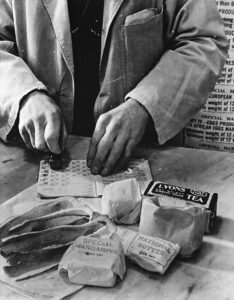
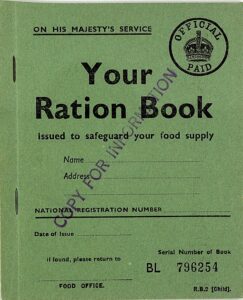 When my dad, Staff Sergeant Allen Spencer, was serving in the Army Air Force during World War II, rationing was not an unusual thing. Nevertheless, most of us think of rationing to be in the form of gas rationing. That is pretty much the kind of rationing we have heard being used these days, but on January 8, 1941, the government of the United Kingdom began a different kind of rationing…food. I can see the value of such a thing, because by limiting the amount of food each person could have, they could ensure that everyone was able to get enough food to sustain them. People weren’t going to gain weight on the amount of food allowed, but they could survive. I suppose the fact that there were so many extra people, in the form of the military forces, just added to the need to ration.
When my dad, Staff Sergeant Allen Spencer, was serving in the Army Air Force during World War II, rationing was not an unusual thing. Nevertheless, most of us think of rationing to be in the form of gas rationing. That is pretty much the kind of rationing we have heard being used these days, but on January 8, 1941, the government of the United Kingdom began a different kind of rationing…food. I can see the value of such a thing, because by limiting the amount of food each person could have, they could ensure that everyone was able to get enough food to sustain them. People weren’t going to gain weight on the amount of food allowed, but they could survive. I suppose the fact that there were so many extra people, in the form of the military forces, just added to the need to ration.
Of course, some food rationing occurred before this date too. Rationing was introduced temporarily by the government of the United Kingdom several times during the 20th century, during and immediately after a war. At the start of World War II in 1939, the United Kingdom was importing 20 million long tons of food per year, including about 70% of its cheese and sugar, almost 80% of its fruit and about 70% of its cereals and fats. It also imported more than half of its meat and relied on imported feed to support its domestic meat production. The civilian population of the country alone, was about 50 million. It was one of the principal strategies of the Germans in the Battle of the Atlantic to attack shipping bound for Britain, restricting British industry and 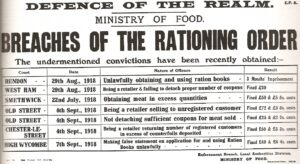 potentially starving nations into submission. Siege tactics were not unusual and have been used throughout history by several countries.
potentially starving nations into submission. Siege tactics were not unusual and have been used throughout history by several countries.
So, to deal with the various forms of shortages, and sometimes extreme shortages, the Ministry of Food instituted a system of rationing. Basically, the Ministry of Food would buy most rationed items, forcing anyone who wanted some of these items to register at chosen shops. Upon registration, they were provided with a ration book containing coupons. The shopkeeper was provided with enough food for registered customers. Purchasers had to present ration books when shopping so that the coupon or coupons could be cancelled as these pertained to rationed items. Rationed items had to be purchased and paid for as usual, although their price was strictly controlled by the government and many essential foodstuffs were subsidized. Basically, rationing restricted what items and what amount could be purchased, as well as what they would cost. To make matters worse the items that were not rationed could be scarce, because the Ministry of Food did not purchase said items. The priced for some of the unrationed items were also controlled by the Ministry of Food, and for many people those prices were too high for them to be able to afford, causing people to try to cheat the system, and merchants to try to either assist the people or to gouge the public in order to make a buck. This brought penalties for 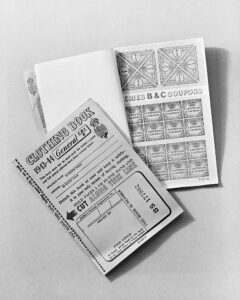
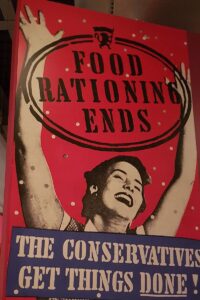 breaking the laws of rationing.
breaking the laws of rationing.
During the World War II, rationing was not restricted to food, and was part of a strategy including controlled prices, subsidies, and government-enforced standards. The goal for this controlled pricing and rationing was to manage scarcity and prioritize the armed forces and essential services with the supplies they needed first. They did still try to make available to everyone, an adequate and affordable supply of goods of acceptable quality. I suppose that how well they accomplished their goal, would be a matter of opinion. Of course, like all wars, World War II ended, as did the rationing of the time, but rationing has returned a number of times, and will again, should the need arise.

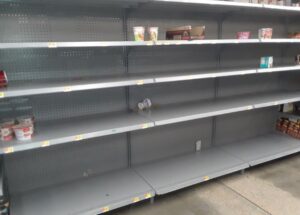 These days, we have probably seen more “shortages” of the staples needed for daily life than ever before. Things like food, water, toilet paper, sugar, gasoline, and so many other things that most people use every day, are suddenly missing from our shelves or stations. Today’s “shortages” are mostly caused by forced blocking of shipping channels, and other political maneuvering…at least these days. There are as many reasons for most shortages as there are shortages, in reality, but some shortages have been stranger over the years than others. Sometimes, it’s even for our own good or if it is “perceived” to be for our own good.
These days, we have probably seen more “shortages” of the staples needed for daily life than ever before. Things like food, water, toilet paper, sugar, gasoline, and so many other things that most people use every day, are suddenly missing from our shelves or stations. Today’s “shortages” are mostly caused by forced blocking of shipping channels, and other political maneuvering…at least these days. There are as many reasons for most shortages as there are shortages, in reality, but some shortages have been stranger over the years than others. Sometimes, it’s even for our own good or if it is “perceived” to be for our own good.
Things have been pulled off the shelves because of recalls, like vegetables that may have Salmonella, and even if the source was confined to one small area of one plant, as was the case with baby formula. The government shut down all the plants, causing a serous baby formula shortage. No one wants to buy unsafe formula, but that was really never the case, and they knew it. Excedrin was pulled off the shelves because it “might” have an ingredient that was unsafe, and then weeks later, it was back, in exactly the same formulation.
The closing of a business is one of the biggest reasons for items to suddenly be missing from the shelves. 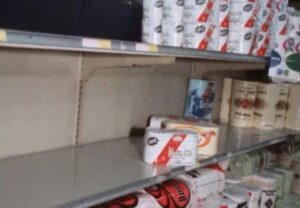
 Twinkies is a prime example. When Hostess Brands Inc, the maker of Twinkies and other cherished American treats, announced bankruptcy and closure in 2012, consumers made a mad rush to their local supermarkets to get their hands on the cream-filled pastries before they were gone for good. It is that act that prompted the myth that Twinkies have an unlimited shelf life. The snacks were back on the shelves by summer, when Hostess and all of its brand holdings, including Twinkies, were purchased out of bankruptcy by the private equity firms Apollo Global Management and Metropoulos and Company in 2013.
Twinkies is a prime example. When Hostess Brands Inc, the maker of Twinkies and other cherished American treats, announced bankruptcy and closure in 2012, consumers made a mad rush to their local supermarkets to get their hands on the cream-filled pastries before they were gone for good. It is that act that prompted the myth that Twinkies have an unlimited shelf life. The snacks were back on the shelves by summer, when Hostess and all of its brand holdings, including Twinkies, were purchased out of bankruptcy by the private equity firms Apollo Global Management and Metropoulos and Company in 2013.
One of the funniest shortages, though not funny at the time or in the repeat of it in recent times, was the 1973 toilet paper shortage. It happened as the result of a joke by Johnny Carson. He said, “You know, we’ve got all sorts of shortages these days. But have you heard the latest? I’m not kidding. I saw it in the papers. There’s an acute shortage of toilet paper.” The remarks that were meant as a joke, caused people to rush to the stores and buyout all the toilet paper. To make matters worse, some stores began rationing. Finally, Carson took to the airwaves to apologize, saying, “I don’t want to be remembered as the man who created a false toilet paper scare. I just picked up the item from the paper and enlarged it somewhat…there is no shortage.”

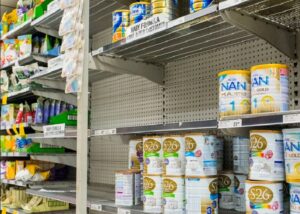
There are so many ways a shortage can get started. Some are real events, while others are manufactured. While some are not exactly detrimental, as was the case with Twinkies, some can cause serious harm and even death…even many deaths. Some shortages cannot be helped, but those that can, in all prudence, should be avoided at all costs.
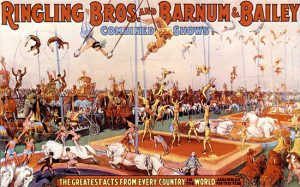 Most people have attended a circus at one time or another, although they are becoming a little more something from the past. Nevertheless, they used to be huge attractions, and when the circus came to town, almost the whole town turned out to watch the show. That was something that worked against the people of Hartford, Connecticut on July 6, 1944. At that time, Hartford was a city of approximately 13,000 people. The Independence Day festivities had just passed and now the circus was in town to continue the week’s excitement for the townspeople. The Ringling Brothers and Barnum Baily Circus was famous for its incredible show, held under a huge circus tent. At 8,000 people in attendance, about 2/3 of the town was there. It was going to be a great show, and the children of the town were beyond excited.
Most people have attended a circus at one time or another, although they are becoming a little more something from the past. Nevertheless, they used to be huge attractions, and when the circus came to town, almost the whole town turned out to watch the show. That was something that worked against the people of Hartford, Connecticut on July 6, 1944. At that time, Hartford was a city of approximately 13,000 people. The Independence Day festivities had just passed and now the circus was in town to continue the week’s excitement for the townspeople. The Ringling Brothers and Barnum Baily Circus was famous for its incredible show, held under a huge circus tent. At 8,000 people in attendance, about 2/3 of the town was there. It was going to be a great show, and the children of the town were beyond excited.
With the tent filled to capacity, a fire is the worst nightmare, but that is what they had. No one knows exactly what happened, and the 8,000 people inside really had no time in which to react. As panic spread as fact as the fire broke out under the big top of circus, killing 167 people and injuring 682. Two thirds of those who perished 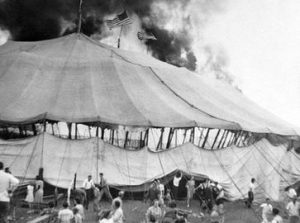 were children. The cause of the fire was unknown, but it spread at incredible speed, racing up the canvas of the circus tent. Suddenly, patches of burning canvas began falling on them from above, and a stampede for the exits began. People became trapped under fallen canvas, but most were able to rip through it and escape, but after the tent’s ropes burned and its poles gave way, the whole burning big top came crashing down, trapping those who remained inside. Within 10 minutes it was over, and some 100 children and 60 of their adult escorts were dead or dying.
were children. The cause of the fire was unknown, but it spread at incredible speed, racing up the canvas of the circus tent. Suddenly, patches of burning canvas began falling on them from above, and a stampede for the exits began. People became trapped under fallen canvas, but most were able to rip through it and escape, but after the tent’s ropes burned and its poles gave way, the whole burning big top came crashing down, trapping those who remained inside. Within 10 minutes it was over, and some 100 children and 60 of their adult escorts were dead or dying.
The fire investigation revealed that the tent had undergone a treatment with flammable paraffin thinned with three parts of gasoline to make it waterproof. These days, no on would consider using gasoline for such a purpose, but unfortunately at that time it was used. Ringling Brothers and Barnum and Bailey Circus eventually agreed to pay $5 million in compensation, and several of the organizers were convicted on manslaughter charges. In 1950, the cause was finally uncovered in the case when Robert D Segee of Circleville, Ohio, confessed to starting the Hartford circus fire. Segee claimed that he had been an arsonist since the age of six and that “an apparition of an Indian on a 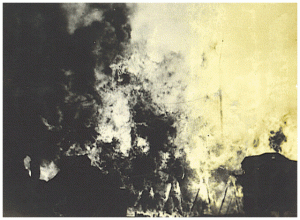 flaming horse often visited him and urged him to set fires.” In November 1950, Segee was convicted in Ohio of unrelated arson charges and sentenced to 44 years of prison time. The Hartford investigators raised doubts over his confession. Segee had a history of mental illness, and it could not be proven he was anywhere within the state of Connecticut when the fire occurred. Connecticut officials were also not allowed to question Segee, even though his alleged crime had occurred in their state. Segee, who died in 1997, denied setting the fire as late as 1994 during an interview. Because of this, many investigators, historians, and victims believe the true arsonist…if it was indeed arson…was never found.
flaming horse often visited him and urged him to set fires.” In November 1950, Segee was convicted in Ohio of unrelated arson charges and sentenced to 44 years of prison time. The Hartford investigators raised doubts over his confession. Segee had a history of mental illness, and it could not be proven he was anywhere within the state of Connecticut when the fire occurred. Connecticut officials were also not allowed to question Segee, even though his alleged crime had occurred in their state. Segee, who died in 1997, denied setting the fire as late as 1994 during an interview. Because of this, many investigators, historians, and victims believe the true arsonist…if it was indeed arson…was never found.
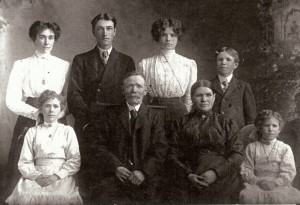 Each of us looks back on our life at one point or another, to reflect on all that has transpired, and the roads traveled to get to the point at which we have arrived. One of the things that often becomes the subject of such reflection, is just how we knew that our parents loved us. Sometimes people mistakenly talk about all the things their parents have given them. Of course, these people are usually teenagers, who have gone beyond the innocent understanding that love isn’t about things, but have not yet reached the point of adulthood, when they will understand that it is often the life lessons taught rather than the gifts received that they value the most.
Each of us looks back on our life at one point or another, to reflect on all that has transpired, and the roads traveled to get to the point at which we have arrived. One of the things that often becomes the subject of such reflection, is just how we knew that our parents loved us. Sometimes people mistakenly talk about all the things their parents have given them. Of course, these people are usually teenagers, who have gone beyond the innocent understanding that love isn’t about things, but have not yet reached the point of adulthood, when they will understand that it is often the life lessons taught rather than the gifts received that they value the most.
In reading my Great Aunt Bertha Hallgren’s journal, I noted that one of the ways she felt the love her father had for her was that he made sure that they were in school, except when they were ill. Even though they lived further away than any of the other children at the school, their attendance was the best by far. The children were wrapped tightly in warm blankets for the journey on those cold North Dakota winter days, but they were in school nevertheless. Great Grandpa Carl Schumacher knew the importance of an education, and was determined that his children would have one. Whenever I hear of a student who wishes their parents wouldn’t make them go to school, I am reminded first that they are very young and naïve, and second that they will 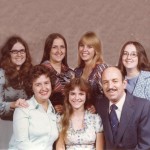 someday feel differently about that whole situation.
someday feel differently about that whole situation.
I know of many parents who have given their children a car and other such expensive gifts, and people seem to feel like they must love them very much. I suppose that could be true, but at the same time, the child has been cheated out of an important life lesson…earning the things you want. When my girls were preparing to drive, I told them that they would need a car, a driver’s license, gasoline, insurance, and a job to pay for all that. I suppose that there were people who saw that as mean on my part, but it is one of the life lessons that my girls look back on fondly. They never felt cheated, they felt empowered. That was the gift they were given, and to this day, they are both strong, capable women, who have raised their children in much the same way. I’m not saying anything against parents who did give their kids a car and such, but rather that this was the standard we chose to give our children. I’m also sure that parents who gave their children a car have taught them other life lessons that their children look back on when they reflect on the love their parents have for them. That is the privilege each parent has…to raise their children in the way that they see fit.
I look back on my own parents, and the standards they set for us, with a sense of pride, because they were great parents. We were never given a car…probably, that is why I did things as I did, but we were give much love, and guidance. We had chores to do, and we helped with cooking. We can all cook and keep house to this day too. We didn’t get to eat out all the time, so when we did, it was a special treat, but I never felt like that I was cheated in any way. My parents showed their love in so many other ways. They raised us to be respectful, and as a result, respected. They showed us love, no matter what, and as a result, we know how to show love…no matter what. They showed us that just as God forgives us for our sins, we need to be forgiving of others and especially not to let the sun go down on your anger. They showed us unconditional love. We knew that nothing we did was going to lose us the love of our parents. Oddly, that made us try harder to do good…or maybe that was their plan all along. Looking back on those times makes me realize that the best way to show you love your child is to live it. Teach them values mixed with compassion, and they will try their hardest to live up to the standards you set for them. That is a real show of love.
was cheated in any way. My parents showed their love in so many other ways. They raised us to be respectful, and as a result, respected. They showed us love, no matter what, and as a result, we know how to show love…no matter what. They showed us that just as God forgives us for our sins, we need to be forgiving of others and especially not to let the sun go down on your anger. They showed us unconditional love. We knew that nothing we did was going to lose us the love of our parents. Oddly, that made us try harder to do good…or maybe that was their plan all along. Looking back on those times makes me realize that the best way to show you love your child is to live it. Teach them values mixed with compassion, and they will try their hardest to live up to the standards you set for them. That is a real show of love.

